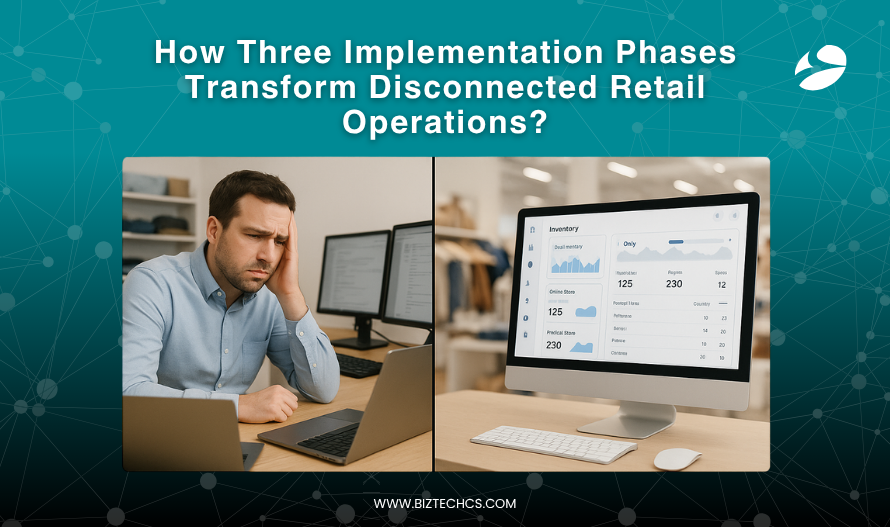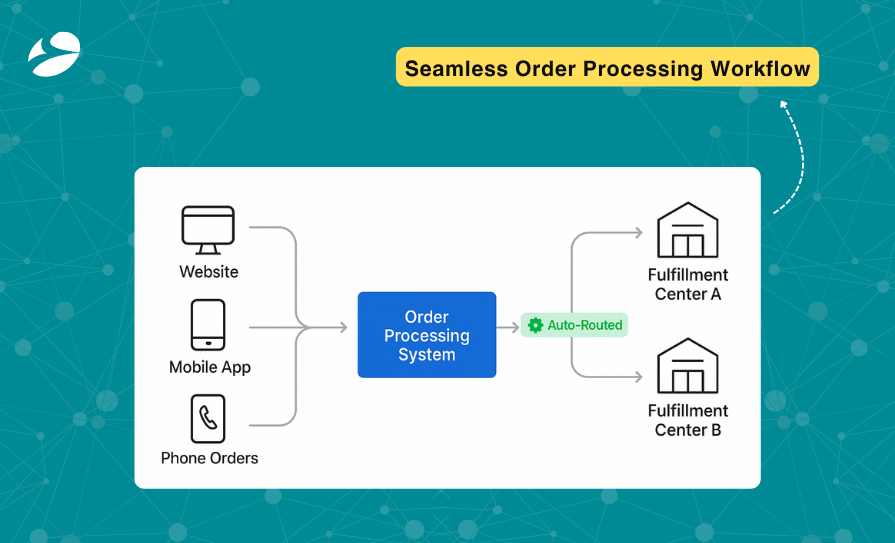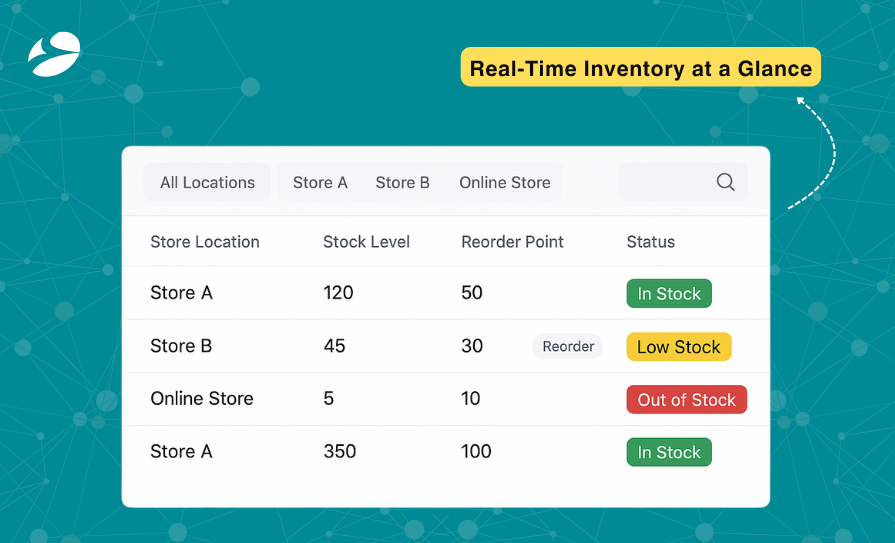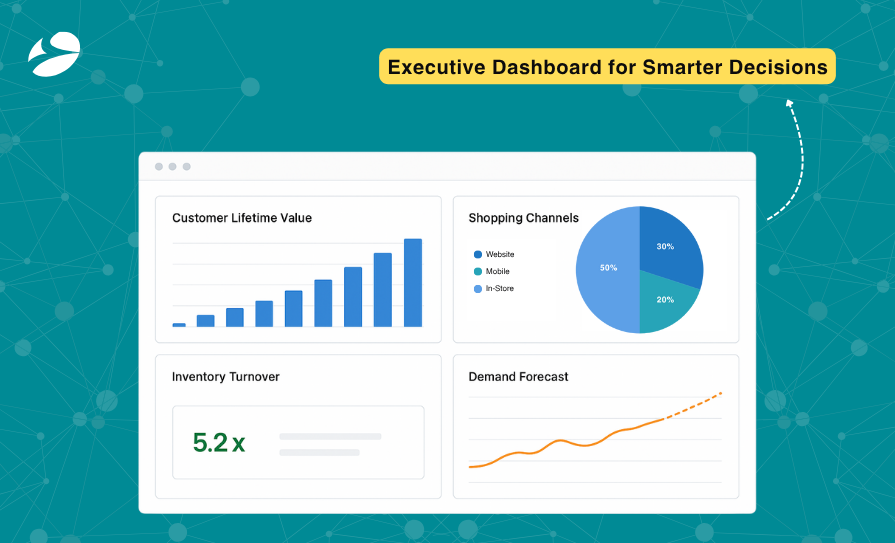85
How Three Implementation Phases Transform Disconnected Retail Operations?
13 Aug, 2025
5 min read
85
13 Aug, 2025
5 min read

Picture this: It's peak shopping season, and your customer calls asking about a product they saw online. Your store associate checks the system and confidently confirms availability, only to discover the item is actually out of stock when they go to fulfill the order. Meanwhile, your online store continues accepting orders for products sitting unsold in your physical locations. Sound familiar?
This scenario plays out daily across retail businesses throughout the UAE and beyond. The culprit? Fragmented systems that treat online and physical stores as separate entities, creating a maze of disconnected data that frustrates both customers and staff.
Recent studies reveal the true impact of these disconnected operations. According to Deloitte's retail survey, 73% of customers expect a consistent experience across all channels, yet only 29% of retailers feel they're delivering on this expectation. The gap between expectation and reality is costing businesses more than just customer satisfaction—it's directly impacting their bottom line.
Consider a typical scenario we encounter regularly: A growing retail chain operates physical stores using one inventory system while their e-commerce platform runs on another. Each morning starts with manual reconciliation attempts, trying to align stock levels across channels. By afternoon, discrepancies multiply. Customers abandon carts due to inventory uncertainty, while perfectly good products gather dust in locations where demand exists.
When we work with retailers facing these challenges, we typically start by asking: How many different systems does your team interact with daily to get a complete picture of your inventory and sales performance? The answer often reveals the true scope of operational complexity that's quietly undermining their efficiency.
Our Insight: The challenge isn't just technical—it's operational. When your systems don't communicate, your entire organization operates in silos. Sales teams can't access real-time inventory, customer service representatives work with outdated information, and management lacks the unified view needed for strategic decision-making. This is precisely where our expertise in Odoo for omnichannel retail implementation can transform your operations from reactive to proactive.
The term “omnichannel” gets thrown around frequently, but what does it actually mean for your retail operations? At its core, omnichannel retail means your customers experience your brand as one cohesive entity, regardless of how they choose to shop with you.
However, Statista research indicates that while global e-commerce sales are projected to reach $8.1 trillion by 2026, many retailers still struggle with basic channel integration. The data shows that businesses with strong omnichannel strategies retain 89% of their customers, compared to 33% for companies with weak strategies.
When working with retailers facing these challenges, we often hear similar frustrations:
These operational pain points translate directly into customer experience issues. A customer might drive to your store based on online inventory information, only to find the item unavailable. Or they might wait weeks for an item that's actually sitting in a store location just miles away.
During our discovery sessions, we often ask clients: How often do you currently experience situations where customers can't complete their desired transaction due to system limitations or inventory discrepancies? This question usually reveals the frequency and cost of these missed opportunities.
Our Approach: We've found that successful Odoo for omnichannel retail implementation starts with mapping your current customer journey and identifying every point where disconnected systems create friction. This foundation helps us prioritize which integrations will deliver the most immediate impact for your specific business model.
The journey toward unified retail operations begins with your inventory—the foundation that supports every customer interaction. This is where BiztechCS typically starts our implementation process, establishing centralized inventory management with Odoo that transforms how you track, manage, and optimize your stock across all locations and channels.

Rather than forcing you to abandon existing processes overnight, we implement a phased approach that allows you to gradually implement real-time stock updates with Odoo while maintaining business continuity. Our first phase typically focuses on:
Inventory Synchronization Architecture
We help your physical stores and online platforms share a single source of truth for inventory data. When a customer purchases an item in-store, your online availability updates instantly. When an online order is placed, your staff immediately sees the reduced stock levels.
Automated Stock Level Management
We eliminate the manual stock checks and spreadsheet reconciliation that consume your team's time. Our system automatically tracks inventory movements, whether they occur through sales, returns, transfers, or adjustments. This automation eliminates the human error that often compounds inventory discrepancies.
Multi-Location Visibility
We provide your team with real-time visibility into stock levels across all locations. When we ask our clients to consider their current inventory challenges—What percentage of your time is currently spent on manual inventory reconciliation, and how would you redirect that effort if it were automated?—the answers help us design systems that maximize the freed-up capacity.
Our Insight: The key to successful inventory centralization lies in clean data migration and comprehensive staff training. We've found that involving your floor staff in the setup process creates ownership and ensures the system meets real-world operational needs.
Many retailers worry about the complexity of transitioning from multiple inventory systems to a unified approach. However, when Odoo retail integration for physical and online stores is implemented thoughtfully, we actually simplify daily operations rather than complicate them.
Starting Small, Scaling Smart
Rather than attempting to integrate every location and product line simultaneously, we often begin with a pilot approach. We might start with your highest-volume products or your most problematic stock categories, allowing you to refine processes before expanding system-wide.
Staff Engagement and Training
Your team's adoption of the new system determines its success. We involve staff in identifying pain points and desired features, creating natural champions who help drive organization-wide adoption.
With your inventory foundation established, we move to the next phase, focusing on unifying your sales processes across all channels. Our implementation of the Odoo sales module for retail and e-commerce creates a seamless order management experience that benefits both your customers and your operational team.

When we implement integrated sales systems, customers can place orders through any channel—whether browsing your website, visiting your store, or calling your customer service team—and they're all processed through the same underlying system. This integration eliminates the confusion and delays that occur when different channels operate independently.
Single Order Management Dashboard
We provide your team access to all orders through one interface, regardless of how customers placed them. This unified view enables better prioritization, more efficient fulfillment, and consistent communication with customers about order status.
Automated Fulfillment Routing
Our system intelligently determines the best fulfillment location for each order based on inventory availability, customer location, and shipping preferences. An online order might be fulfilled from the nearest store, while an in-store purchase could trigger automatic replenishment from your central warehouse.
Cross-Channel Customer Service
We ensure your customer service team can access complete order history and current status information, regardless of how customers initially placed their orders. This comprehensive view enables more helpful, informed customer interactions.
According to Odoo's retail insights, businesses using integrated sales systems see 35% faster order processing times and 28% improvement in customer satisfaction scores.
Real-Time Order Tracking
We implement systems that provide customers with consistent, accurate updates about their orders, whether placed online or in-store. The system automatically sends notifications at key fulfillment milestones, reducing customer service inquiries and improving satisfaction.
Flexible Fulfillment Options
Our integration enables creative fulfillment options like buy-online-pickup-in-store (BOPIS), ship-to-store, or same-day delivery from local inventory. These options meet diverse customer preferences while optimizing your operational efficiency.
Returns and Exchanges Simplified
With our implementation, customers can return or exchange items at any location, regardless of the original purchase channel. Your staff has immediate access to purchase history and can process returns efficiently, improving customer experience and reducing processing time.
During this phase, we often ask our clients: How much time does your team currently spend tracking down order information across different systems, and what would they focus on instead if this process were automated? The answers help us fine-tune the system to maximize productivity gains.
Our Approach: Successful sales channel integration requires careful attention to tax calculations, pricing consistency, and promotional coordination across channels. We ensure these details are handled seamlessly, as they significantly impact customer trust and operational efficiency.
The final implementation phase focuses on leveraging your newly integrated data to drive strategic decision-making and personalized customer experiences. With inventory and sales systems unified, we provide you with unprecedented visibility into customer behavior and business performance.

Cross-Channel Purchase History We ensure your system maintains complete customer profiles that include all interactions across channels. Whether a customer shops primarily online, in-store, or through a combination of both, you maintain a complete picture of their preferences and purchasing patterns.
Behavioral Analytics and Insights Our implementation helps you understand how customers move between channels, providing valuable insights for inventory planning, marketing campaigns, and customer service strategies. You might discover that customers who browse online but purchase in-store have different preferences from purely online shoppers.
Personalized Experience Delivery With comprehensive customer data in place, your team can provide personalized recommendations, targeted promotions, and customized service based on individual customer history and preferences.
Real-Time Performance Monitoring We provide management dashboards with instant access to key performance indicators across all channels and locations. You can identify trends, spot problems early, and capitalize on opportunities as they emerge.
Inventory Optimization Our system combines historical sales data with seasonal trends and current inventory levels to enable more accurate demand forecasting and inventory planning. This intelligence helps reduce carrying costs while ensuring product availability.
Strategic Planning Support We implement comprehensive reporting capabilities that support strategic decisions about new locations, product lines, pricing strategies, and resource allocation based on actual performance data rather than assumptions.
When we reach this phase, we often ask clients: What decisions would you make differently if you had real-time visibility into customer behavior and performance metrics across all your sales channels? This question helps us customize the analytics and reporting features to support your specific strategic objectives.
Our Insight: The most successful implementations go beyond basic integration to create a culture of data-driven decision making. When your team regularly uses system insights to guide daily operations, you maximize the return on your technology investment. This is where ongoing support and training become crucial for long-term success.
Implementation success extends beyond operational efficiency—it directly impacts your bottom line and customer relationships. We've observed that businesses that successfully implement omnichannel retail strategies typically see measurable improvements across multiple areas.
Revenue Growth Through Better Availability
When we implement systems that provide customers with confidence in product availability, conversion rates improve dramatically. Our clients typically see 15-25% increases in online conversion rates simply by providing accurate, real-time inventory information.
Reduced Operational Costs
Automated inventory management and unified order processing reduce the manual labor currently required to maintain separate systems. Staff time previously spent on data reconciliation can be redirected to customer service and strategic activities.
Optimized Inventory Investment
Better demand visibility and automated reordering through our implementations help optimize inventory levels, reducing both stockouts and excess inventory carrying costs. Many BiztechCS clients reduce inventory investment by 10-20% while improving product availability.
Improved Satisfaction Scores
Customers appreciate consistent experiences and accurate information. Net Promoter Scores typically improve when omnichannel strategies are successfully implemented, as customer frustration with system limitations decreases.
Increased Customer Lifetime Value
Omnichannel customers typically spend more over time compared to single-channel customers. When we make it easy for customers to interact with your business through their preferred channels, they tend to engage more frequently and make larger purchases.
Enhanced Brand Loyalty
Consistent, reliable experiences across all touchpoints build customer confidence in your brand. This trust translates into repeat purchases and positive word-of-mouth recommendations.
Faster Decision Making
Real-time data access that BiztechCS provides enables quick responses to market changes, inventory issues, and customer needs. Management teams can identify and address problems before they significantly impact operations.
Improved Staff Productivity
When BiztechCS ensures staff members have access to complete, accurate information, they can serve customers more effectively and spend less time searching for data across multiple systems.
Better Resource Allocation
Comprehensive visibility into performance across channels and locations enables more strategic resource allocation, whether for inventory, staffing, or marketing investments.
During our success measurement phase, BiztechCS typically asks: Which of these potential improvements would have the greatest impact on your current business challenges, and how would you measure success in your specific situation? This helps us establish benchmarks and track meaningful progress.
Every retail business faces unique challenges when transitioning from fragmented systems to integrated operations. We've developed proven strategies to address these potential obstacles and ensure a smoother implementation process.
Legacy System Compatibility
Many retailers worry about integrating existing systems with new omnichannel capabilities. However, we specialize in working with existing infrastructure through APIs and data synchronization tools, allowing gradual migration rather than complete system replacement.
Data Migration and Quality
Moving from multiple systems to a unified platform requires careful attention to data quality and consistency. We prioritize clean, accurate data migration that sets the foundation for system success, while poor data quality can undermine even the best integration efforts.
Staff Training and Adoption
Technology changes often create anxiety among staff members comfortable with existing processes. We prioritize comprehensive training and ongoing support to ensure team members feel confident using new systems.
Phased Implementation Approach
Rather than attempting to change everything simultaneously, we follow a proven phased approach that allows teams to adapt gradually while maintaining business continuity.
Clear Communication and Expectations
We keep all stakeholders informed about implementation progress, benefits, and any temporary disruptions to maintain support and enthusiasm throughout the process.
Continuous Improvement Mindset
We view go-live as the beginning of an optimization journey rather than a final destination. We provide regular system refinements based on user feedback and performance data to maximize long-term value.
When addressing concerns, we often ask clients: What concerns do you have about implementing integrated retail systems, and how might addressing these concerns early help ensure project success? This proactive approach helps us tailor our implementation strategy to your specific situation.
Our Approach: We've found that businesses with realistic timelines and strong internal champions achieve the most successful implementations. Rushing the process often creates problems that take longer to resolve than investing in proper planning upfront.
The journey from fragmented retail operations to seamless omnichannel experiences doesn't happen overnight, but it doesn't have to be overwhelming either. Success comes from taking thoughtful, strategic steps that build on your existing strengths while addressing your most pressing challenges.
Current State Analysis We begin by understanding your existing systems, processes, and pain points, providing the foundation for effective planning. This assessment identifies which integrations will deliver the most immediate value and helps prioritize implementation phases.
Future State Vision We work with you to clearly define your desired outcomes—whether focused on customer experience, operational efficiency, or business growth—guiding technology decisions and helping measure progress throughout implementation.
Resource Planning Successful implementations have adequate time, budget, and staff resources. Our realistic planning prevents rushed decisions and ensures your team can properly support the transition.
Stakeholder Engagement
We involve key team members in planning and decision-making, creating ownership and ensuring the solution meets real operational needs. Front-line staff often provide valuable insights about customer pain points and workflow requirements.
Ongoing Support and Optimization
We provide implementation expertise with retail experience and a track record of successful omnichannel projects. We understand your industry challenges and provide ongoing support beyond initial implementation.
Success Metrics Definition
We establish clear, measurable goals that help track progress and demonstrate value throughout the implementation process. These metrics align with your business objectives and provide actionable insights for continuous improvement.
When planning your path forward, we often ask: Are you ready to take the first step toward unified retail operations? BiztechCS would be happy to discuss your specific situation and explore how an integrated approach might address your current challenges while supporting your growth objectives.
The retail landscape continues evolving rapidly, with customer expectations for seamless experiences rising alongside technological capabilities. Businesses that successfully integrate their operations position themselves not just to meet current customer demands, but to adapt quickly to future market changes.
Odoo for omnichannel retail provides the foundation for this transformation, but technology alone doesn't guarantee success. We combine robust technical capabilities with careful change management, comprehensive staff training, and ongoing optimization based on real-world performance data.
Your journey toward integrated retail operations represents more than a technology upgrade—it's an investment in your business's long-term competitiveness and growth potential. By eliminating the inefficiencies and customer frustrations created by fragmented systems, we create space for innovation, improved customer relationships, and strategic growth initiatives.
The question isn't whether omnichannel retail integration will benefit your business, but how quickly we can implement these capabilities while maintaining operational stability. Every day spent managing disconnected systems is a day not spent serving customers, growing sales, and building competitive advantages.
Whether you're just beginning to explore omnichannel possibilities or ready to move forward with implementation, we provide action that aligns with your current situation and growth objectives.
Consider scheduling a consultation with BiztechCS to discuss your specific challenges and explore how integrated retail operations might address your pain points while supporting your business goals. There's no obligation—just an opportunity to gain clarity about your options and potential next steps.

70
By Biztech
09 Oct, 2025

78
By Biztech
09 Oct, 2025

95
By Biztech
06 Oct, 2025